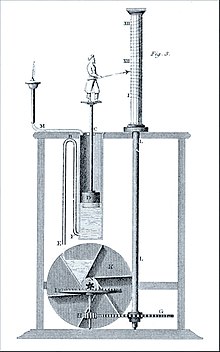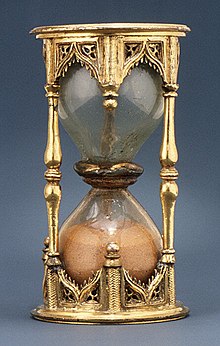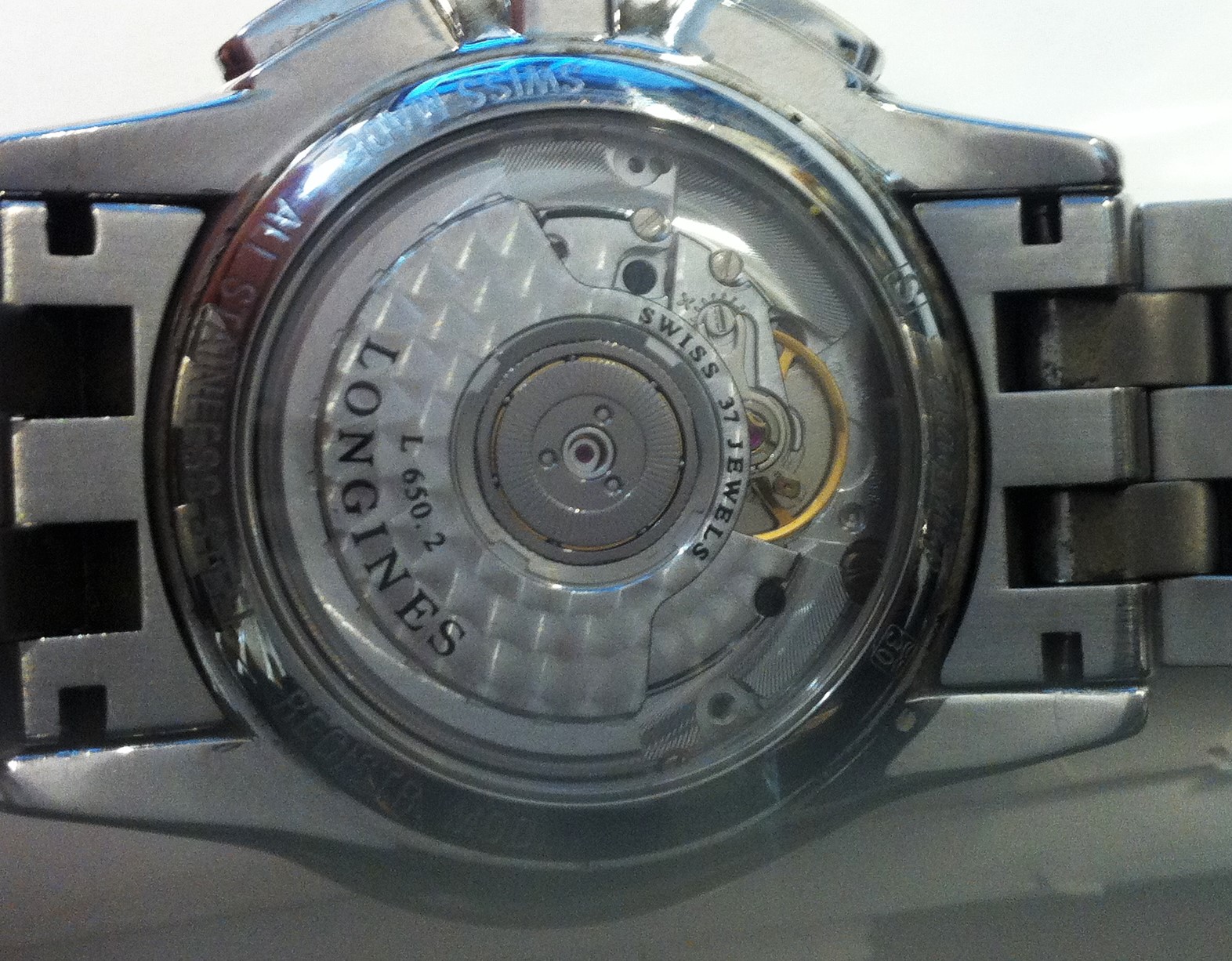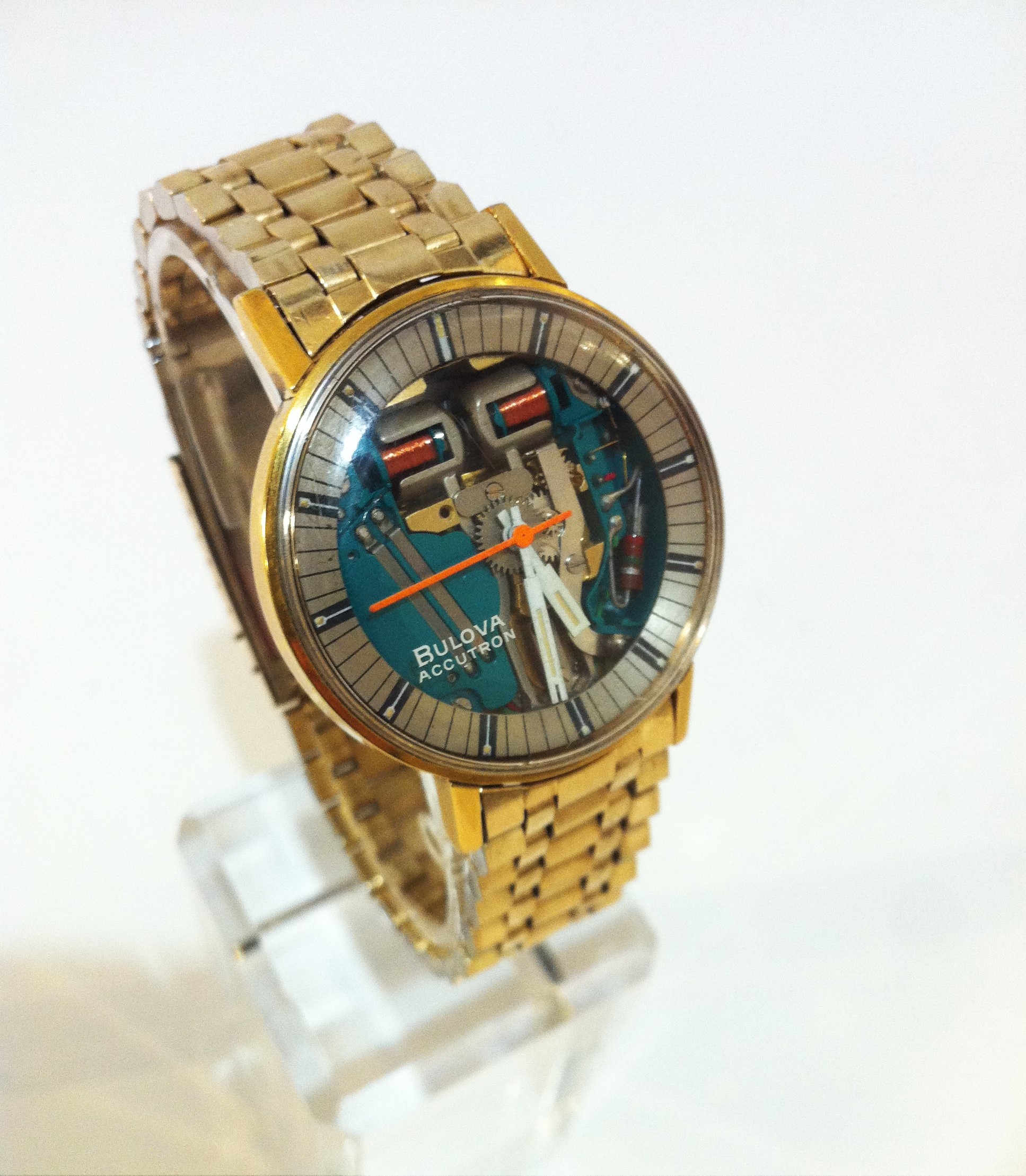It doesn't just tell time. It tells history – Rolex
A clock is a device that measures, holds and shows time.
Whether you like to wear them or not, you have to admit that watches are one of the most famous and popular fashion accessories today, not just because of their practicality but also as a status symbol. With the development of technology and the development of time systems, today we even have so-called smart watches, which not only serves the purpose of showing the exact time but also offers various functions and applications that certainly make everyday life easier for man in modern times.
The human need for accurate timekeeping dates back to the oldest civilizations that devised various original methods and developed a timekeeping system using nature and astronomy. So we can say that clock is one of the oldest human inventions.
The oldest measurement of time is the Sundial known since ancient Egypt and Mesopotamia more than 3000 B.C. The sundial shows the time by displaying shadow position on a flat surface.
Source: https://en.wikipedia.org/wiki/Sundial
The first non-astrological tracking time device was a water clock called the CLEPSIDRA, used by the ancient Egyptians, Greeks, and Romans, and used predominantly in meetings to measure the time allotted to individual speakers. The Greek inventor Ctesibius of Alexandria in 3rd century B.C. adds on clepsidra hands, gong and a trumpet that make sounds at a certain time, for which we can say that is the first clock with alarm.
Source: https://en.wikipedia.org/wiki/Water_clock
Other ingenious methods for measuring time were using candles and oil lamps, which were never perfectly accurate.
Water and candle clocks were replaced by an hourglass. In the 8th century hourglass was invented by the French monk Luitprand, and it consists of two connected chambers (zucchini) that allow sand to flow from top to bottom.
Source: https://en.wikipedia.org/wiki/Hourglass
A mechanical clock is a measuring instrument that has it's own energy source that measures the flow of time. The first mechanical clock with weights began to appear on church towers in Western Europe, more precisely in England in the 13th century. The most famous example of tower clock is for sure Big Ben in London while the oldest working mechanical tower clock without dial is in Salisbury Cathedral from 1386. In the first half of the 14th century, the first house clocks began to be made, and they imitates the shape of those public tower clocks. Due to the weight drive, the first home clocks were mounted on the wall due to their functionality. The new spring drive made it possible to make smaller watches, like table clock and eventually a pocket watch. The making of the first pocket watch is attributed to the Nuremberg locksmith Peter Henlein around 1510. Interestingly, the first pocket watches had only one hand showing the hour, while the minute and second hands appeared in the 17th century.

An example of an OMEGA pocket mechanical watch from our collection.
Mechanical clocks were quite inaccurate, but with the invention and application of a mechanical oscillator that controls the rhythm of the clock they become reliable, and this is due to the Dutch physicist Christiaan Huygens who in 1656 applied the free pendulum as a mechanical oscillator according to the original idea started by Galileo. But it turned out that the main disadvantage of a pendulum and weight watch is the inability to work in motion.
Following the invention of the English scientist Robert Hooke's "law of elasticity", Christiaan Huygens in 1675 constructed a balance spring, spiral spring attached to balance wheel as mechanical oscillator. That invention significantly improved the accuracy of the watch.
Important inventions that Huygens invented for the watch as a pendulum and a balance spring become the foundations of the manufacture of mechanical watches. His achievements in the development and spread of mechanical watches earned him the reputation of the father of mechanical watches.
In 1735, John Harrison made a prototype of a particularly precise spring-loaded mechanical watch, called a chronometer. The institution issuing the certificate of accuracy is called the Controle Officiel Suisse des Chronometres (COSC) and is located in Switzerland. The certificate is issued only to those watches that satisfy the criterion of precision ISO 3159, or whose open mechanism proves a high degree of precision over a period of 15 days in a different positions and at different temperatures. The leading brand of the Swiss watch industry Rolex even went a step further by founding it's own lab in which it developed precision tests according to it's own high criteria, called the Superlative Chronometer certification. Which means that the Rolex mechanism with this test name was first tested by COSC and then by Rolex itself.
Example ROLEX SEA DWELLER from our collection.
The first wrist watches came in the late 19th and early 20th centuries. There are several versions of stories about the origin of the first wristwatch. The most famous and probably the most accurate version is about a watch made for Caroline Bonaparte, the Queen of Naples and Napoleon's sister, made by Abraham-Louise Breguet in 1810. This watch served as the inspiration for the further creation of Breguet's modern collection of women's watches named after the nickname of Caroline Bonaparte "Reine de Naples". At the beginning, the wristwatch was reserved only for women, while men still preferred pocket watches. Until the famous Brazilian pilot Albert Santos Dumont in 1904, when he asked his friend Louis Cartier to make a wristwatch that would allow him to keep his hands on the controls panel while measuring his flight performance, which his pocket watch did not allow to do so. There so the first men's wristwatch was named after the this pilot, which is still produced today. With the advent of the war, men's watches for soldiers soon began to be commercially produced, because a wristwatch on the battlefield allowed greater freedom of movement for solder than a pocket watch.
An automatic or self-winding watch is a mechanical watch in which the spring is automatically wound during the natural movement of the hand. Which as a result creates energy that allows the watch to work, so manual winding is unnecessary. Abraham Louis Perrelet, an innovator from Switzerland, is considered to be the inventor of the first self-winding watch in 1770. However, the first automatic wristwatch to be released for sales was watch by the British watchmaker John Harwood in 1923. In 1926, Rolex introduced it's revolutionary Oyster waterproof case for the first time. To prove waterproof, founder Hans Wilsdorf equipped the famous swimmer Mercedes Gleitze with a Rolex Oyster as she tried to swim across the English Channel. Admittedly, the breaking record attempt failed due to unfavorable weather conditions, but the watch survived it's time in icy cold water for more then 10 hours without any damages. The success of the wristwatch was unstoppable.
In 1931, Rolex Oyster introducing it's first self-winding watch with a Perpetual rotor, a true work of art that is at the heart of every modern automatic watch today.
Example of a Longines Flagship Automatic watch from our collection with a perpetual rotor.
Electric / Electronic clock is a battery-powered clock that does not need winding because it draws power from the battery itself, which can and does not need to be charged. The electric watch first appeared in 1952 by Elgin National Watch Company & Lip (Elgin Grade 725), while in 1957 Hamilton was the first to start mass production of his watch model Hamilton Electric 500, which comes in non-traditional case shapes, including the Ventura model that was worn by Elvis Presley.
Bulova Accutron 214 is the first electric clock that has a transistor and instead of a balance wheel has a vibrating fork (tuning fork) that vibrates at 360Hz which was 150 times faster than average mechanical watches and guaranteed accuracy up to 1 sec per day. Another interesting thing about this mechanism is that this clock does not tick, it buzzes. Max Hetzel is responsible with this revolutionary mechanism that was introduced in 1960.
Bulova Accutron from our collection.
In 1969, the Japanese giant Seiko introduced the first Seiko Quartz Astron 35SQ, a quartz watch with an 18k gold case in a limited edition of 100 copies. You could buy a car for the same amount of money as the cost of that watch at that time. The quartz watch is powered by a battery that sends an electric current through small quartz crystals, which then create vibrations that retain the oscillating movements that drive the hands of the watch. In the 1970s and 1980s of the last century, the quartz watch for it's cheap production and high precision, turned the entire watch industry upside down and caused the so-called "quartz crisis".
The chronograph was invented in 1816 by the French watchmaker Louis Moinet and was intended for astronomical measurements. The chronograph / stopwatch as a complication begins to put in wristwatch in early 1930s. More precisely the first chronograph came from Breitling manufactory in 1933.
The tourbillon is definitely the most interesting mechanical complication that has for the purpose of undoing the effect of gravity, and allows the watch to retains it's precision and accuracy when the watch is in a certain position. It was in 1795 when Abraham-Louis Breguet developed the turbilion mechanism intended for the pocket watches. For today's watches, there is actually no real need for turbillion function, but it is used as a prestigious complication worthy of admiring watchmaking achievement.
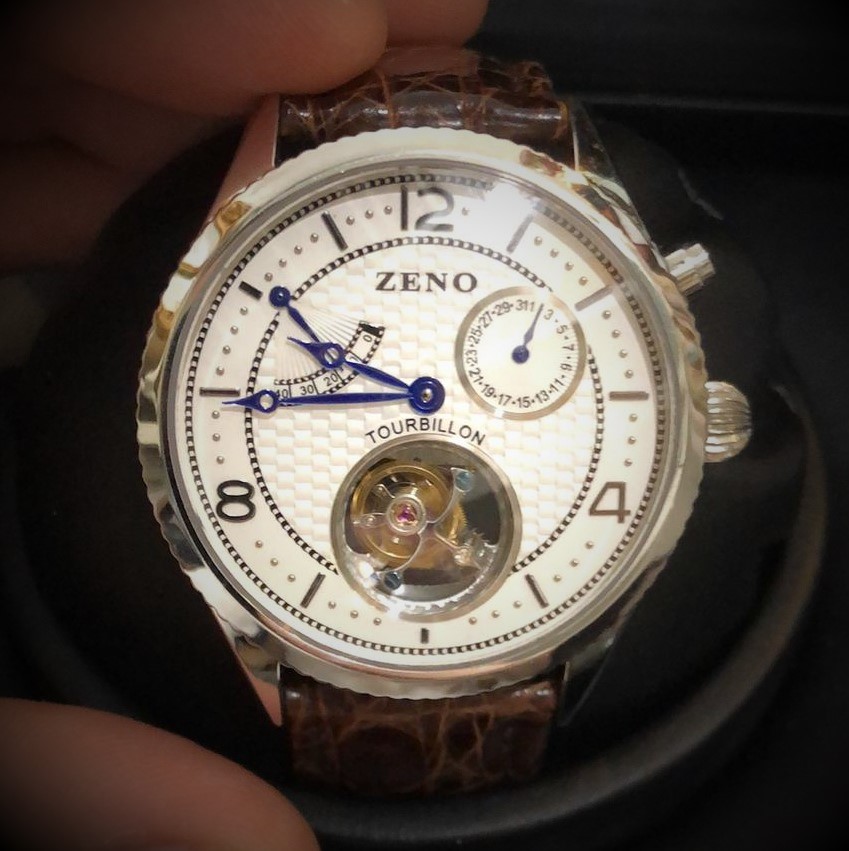
From our collection watch ZENO with Turbillion.
Another technologically demanding complication worthy of admiration is the perpetual calendar. The English horologist Thomas Mudge in 1762 presents the first pocket watch with a perpetual calendar. While there is still an eternal discussion as who actually was the first who set up the perpetual calendar in the wristwatch.
Breguet or Patek Philippe.
However, Audemars Piguet was the first who published the leap year in perpetual calendar in 1955, and that may be the original first modern perpetual calendar.

